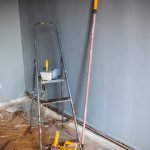Are you wondering how to write up a bill of sale for home improvements? Whether you’re a homeowner or a contractor, it’s important to have a written record of any home improvement transactions. A bill of sale serves as legal documentation and provides protection for both parties involved. In this article, we will guide you through the process of creating a bill of sale for home improvements, from understanding the legal requirements to signing and notarizing the document.
When it comes to home improvements, having a bill of sale is crucial for various reasons. Not only does it provide proof of ownership and payment, but it also outlines important details such as warranties and guarantees.
Additionally, in the event of a dispute or misunderstanding, a well-drafted bill of sale can serve as evidence in legal proceedings. Whether you’re planning to sell your property or showcase your work as a contractor, having a solid bill of sale is essential.
In the following sections, we will discuss the legal requirements for creating a bill of sale for home improvements and provide step-by-step guidance on gathering necessary information, drafting the document, and addressing important details such as purchase price and warranties. By following these guidelines, you can ensure that your bill of sale is comprehensive and legally sound. So let’s dive into the process of writing up a bill of sale for home improvements.
Understanding the Legal Requirements for a Bill of Sale for Home Improvements
Local Regulations and Permits
Before writing up a bill of sale for home improvements, it is crucial to understand the legal requirements that may apply in your local area. Depending on the nature and scope of the home improvements, there may be specific regulations or permits that need to be obtained before the work can commence. These legal requirements vary from location to location, so it is important to consult with local authorities or a legal professional to ensure compliance.
Contractor Licensing and Insurance
When it comes to home improvement projects, especially those involving significant renovations or structural changes, it is essential to work with licensed contractors who carry appropriate insurance coverage. In many jurisdictions, hiring an unlicensed contractor or failing to verify their insurance status can result in legal implications. Therefore, it is imperative to include the details of licensed contractors and their insurance information in the bill of sale for home improvements.
Tax Implications
Another critical aspect of understanding the legal requirements for a bill of sale for home improvements is considering the potential tax implications. Depending on where you live, certain home improvements may impact property taxes or eligibility for tax deductions.
It is advisable to seek guidance from a tax professional to ensure that you are compliant with any tax laws related to home improvements. Including any relevant tax information in the bill of sale can provide clarity and transparency regarding these matters.
By being aware of these legal requirements, homeowners can protect themselves and ensure that their bill of sale accurately reflects all necessary information regarding their home improvements in accordance with applicable laws and regulations.
Gathering Necessary Information for the Bill of Sale
When it comes to creating a bill of sale for home improvements, it is essential to gather all the necessary information before drafting the document. This will ensure that the bill of sale accurately reflects the details of the transaction and protects both parties involved. Here are some key pieces of information that you will need to gather in order to complete the bill of sale:
- Full names and contact information of both the buyer and seller
- Description of the home improvements, including materials used and work completed
- Date of the completion of the home improvements
- Payment details, including purchase price, method of payment, and any installment agreements
It is important to ensure that all relevant information is included in the bill of sale in order to avoid any potential disputes or misunderstandings in the future. By collecting this information beforehand, you can streamline the process of drafting the bill of sale and ensure that it accurately reflects the terms of the transaction.
In addition to gathering basic details about the transaction, it is also important to discuss any warranties or guarantees that may accompany the home improvements. This may include details about any applicable manufacturer warranties on materials used or guarantees for workmanship. Including this information in the bill of sale can provide added protection for both parties in case issues arise with the home improvements down the line.
Writing the Title and Description of the Home Improvements in the Bill of Sale
When writing a bill of sale for home improvements, it is crucial to include a detailed description of the work that has been done. This not only serves as a record of the transaction but also provides clarity on what exactly was included in the home improvement project. Here are some key points to keep in mind when writing the title and description of the home improvements in the bill of sale:
- Be specific: Provide a detailed and accurate title for the home improvements, such as “Kitchen Remodel” or “Bathroom Renovation.” This will clearly outline what work was completed and avoid any confusion in the future.
- List all items included: Whether it’s new appliances, fixtures, or materials, make sure to list all items that were part of the home improvement project. This will help in documenting what was purchased and installed as part of the improvements.
- Include dates: It’s important to include the start and completion dates of the home improvement project in the bill of sale. This can be helpful for future reference and potential warranty claims.
Additionally, if any permits were obtained or inspections conducted as part of the home improvements, this should also be mentioned in the description. Providing a clear and comprehensive description will ensure that both parties are on the same page regarding what was included in the transaction.
Finally, it’s important to add a clause stating that the description provided is accurate to the best of your knowledge. This helps protect both parties from any misunderstandings or disputes regarding the scope of work included in the home improvements.
By following these guidelines, you can accurately document and describe your home improvements in a bill of sale, providing transparency and clarity for all parties involved.
Including the Purchase Price and Payment Details in the Bill of Sale
When creating a bill of sale for home improvements, it is crucial to include the purchase price and payment details to ensure that both parties are in agreement about the financial aspects of the transaction. This section will provide guidance on how to accurately record the purchase price and outline the payment terms within the bill of sale.
Itemizing the Purchase Price
The first step in including the purchase price in the bill of sale is to itemize all costs associated with the home improvements. This may include material costs, labor fees, and any additional expenses incurred during the project. It is important to be thorough and transparent when detailing these costs to avoid any misunderstandings or disputes in the future.
Outlining Payment Terms
In addition to itemizing the purchase price, it is essential to clearly outline the payment terms in the bill of sale. This should include specifics such as the total amount due, any deposits or upfront payments, and a schedule for subsequent payments if applicable. Including specific dates or milestones for payment can help ensure that both parties are in agreement on when funds are expected to be exchanged.
Providing Payment Acknowledgment
Finally, it is advisable to include a clause in the bill of sale that acknowledges receipt of payment. This serves as documented evidence that the agreed-upon purchase price has been paid in full by the buyer. Additionally, having this acknowledgment can protect both parties in case there are any discrepancies or disagreements regarding payment at a later date.
By carefully itemizing the purchase price, outlining payment terms, and providing payment acknowledgment within the bill of sale for home improvements, both parties can enter into this transaction with confidence and clarity on financial matters.
Remember; Always consider seeking legal assistance from professionals specializing in real estate or contract law prior to finalizing any bill of sale related agreements related to property ownership transactions.
Addressing Warranties and Guarantees in the Bill of Sale for Home Improvements
When writing up a bill of sale for home improvements, it is crucial to address warranties and guarantees to protect both the buyer and the seller. A warranty is a written guarantee from the seller that certain aspects of the improvement are as promised.
On the other hand, a guarantee is a promise from the seller that if something goes wrong within a specific period, they will fix or replace it. Including these in the bill of sale can provide assurance to both parties involved.
In order to address warranties and guarantees in the bill of sale, it is important to clearly outline what is covered by each. This should include details such as what specific parts of the home improvement are covered, the duration of the warranty or guarantee, and any conditions that need to be met for them to be valid. By being clear and detailed about these aspects, it can help prevent misunderstandings or disputes in the future.
It is also important to consult with legal professionals when addressing warranties and guarantees in the bill of sale for home improvements. They can provide valuable insight into what should be included and ensure that all legal requirements are met. Additionally, having a legal professional review the document can help protect both parties in case any issues arise in the future.
| Aspect | Consideration |
|---|---|
| Warranty details | Be specific about what is covered and for how long |
| Guarantee terms | Clearly outline what will be fixed or replaced, if needed |
| Legal review | Consult with legal professionals for guidance |
Signing and Notarizing the Bill of Sale
Once you have gathered all the necessary information and written the details of the home improvements in the bill of sale, it is essential to proceed with signing and notarizing the document. This step adds legal validity and authenticity to the bill of sale for home improvements.
When signing the bill of sale, both parties involved should carefully review the document to ensure that all details are accurate and complete. After reviewing, both parties must sign the document in the presence of a notary public. The notary public will then verify the identities of those signing the bill of sale and witness their signatures.
After signing, the notary public will affix their official seal or stamp on the document, confirming that it has been properly executed. This step is crucial in providing assurance that all parties have willingly entered into the agreement outlined in the bill of sale for home improvements.
It is important to keep in mind that notarizing a bill of sale is a legal requirement in some jurisdictions. Even if not required by law, having a notary public witness and authenticate the signing can provide an added layer of protection and peace of mind for both buyers and sellers involved. Additionally, keeping a copy of the notarized bill of sale on file is vital for record-keeping purposes.
| Importance | Task |
|---|---|
| Legal Validity | Signing and Notarizing |
| Notary Public | Document Authentication |
| Record-keeping | Copies |
Keeping a Copy of the Bill of Sale for Record-Keeping Purposes
After completing the process of writing up a bill of sale for home improvements, it is crucial to keep a copy of the document for record-keeping purposes. This is important for both the seller and the buyer as it serves as proof of the transaction and outlines the terms and conditions agreed upon during the sale of home improvements.
Keeping a copy of the bill of sale also provides legal protection in case any disputes or issues arise in the future.
When storing a copy of the bill of sale, it is recommended to keep it in a safe and easily accessible place. It should be stored alongside other important property documents such as contracts, warranties, and receipts related to the home improvements. Additionally, having digital copies of the bill of sale can provide an extra layer of protection in case the physical copy gets lost or damaged.
In some situations, it may be necessary to present a copy of the bill of sale when applying for permits or during a real estate transaction. Keeping a well-organized record-keeping system that includes all pertinent documentation related to home improvements can help facilitate these processes and provide peace of mind for both parties involved.
Conclusion
In conclusion, it is crucial to follow the proper procedure for creating a bill of sale for home improvements. By understanding the legal requirements, gathering necessary information, and including important details such as the purchase price and payment terms, homeowners can protect themselves and ensure a clear record of the transaction. Addressing warranties and guarantees in the bill of sale also provides added security for both parties involved in the home improvement project.
Moreover, signing and notarizing the bill of sale adds an extra layer of validity and authenticity to the document. This step is essential in ensuring that the bill of sale holds up legally if any dispute arises in the future. Additionally, keeping a copy of the bill of sale for record-keeping purposes is important for maintaining documentation of the home improvement project.
In essence, by following these steps on how to write up a bill of sale for home improvements, homeowners can safeguard their investment and establish clear terms with contractors or buyers. Taking the time to create a comprehensive and legally sound bill of sale can provide peace of mind and protection for all parties involved in home improvement transactions.
Frequently Asked Questions
How Do You Write a Bill for Sale?
Writing a bill of sale involves including the date of the sale, details about the buyer and seller, description of the item being sold, sale price, and signatures from both parties. It’s important to be as specific and detailed as possible to avoid any misunderstandings or disputes in the future.
Is There a Bill of Sale Template in Word?
Yes, there are bill of sale templates available in Microsoft Word. These templates provide a convenient and professional format for creating a bill of sale. They typically include all the necessary sections and fields that need to be filled out and can be customized to fit different types of transactions.
How Do You Draw a Bill of Sale?
Drawing up a bill of sale starts with gathering all relevant information about the transaction including names and addresses of both parties involved, a detailed description of the item being sold, and the agreed-upon purchase price. Once all details are gathered, they can be organized into a document using clear language and legal terminology to ensure its validity.
Both parties should carefully review it before signing.

I’m thrilled to have you here as a part of the Remodeling Top community. This is where my journey as an architect and remodeling enthusiast intersects with your passion for transforming houses into dream homes.





